 W
WAbraham Nimham (1745-1778), son of warrior and emissary Daniel Nimham, was a leader of the Wappinger tribe. During the Revolutionary War he served with his father in the Stockbridge Militia, often accompanying Daniel Nimham on diplomatic and recruiting missions.
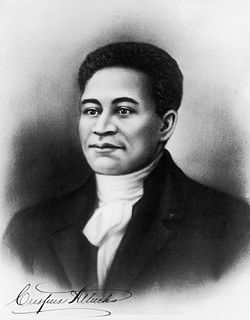 W
WCrispus Attucks was an American stevedore of African and Native American descent, widely regarded as the first person killed in the Boston Massacre and thus the first American killed in the American Revolution. Historians disagree on whether he was a free man or an escaped slave, but most agree that he was of Natick and African descent. Two major sources of eyewitness testimony about the Boston Massacre published in 1770 did not refer to him as "black" nor as a "Negro"; it appears that Bostonians viewed him as being of mixed ethnicity. According to a contemporaneous account in the Pennsylvania Gazette, he was a "Mulattoe man, named Crispus Attucks, who was born in Framingham, but lately belonged to New-Providence, and was here in order to go for North Carolina."
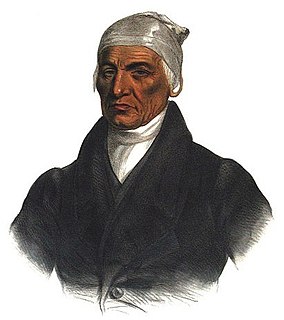 W
WCatecahassa or Black Hoof was the head civil chief of the Shawnee Indians in the Ohio Country of what became the United States. A member of the Mekoche division of the Shawnees, Black Hoof became known as a fierce warrior during the early wars between the Shawnee and Anglo-American colonists. Black Hoof claimed to have been present at the Battle of the Monongahela in 1755, when General Edward Braddock was defeated during the French and Indian War, although there is no contemporary evidence that Shawnees took part in that battle.
 W
WTah-won-ne-ahs or Thaonawyuthe, known in English as either Governor Blacksnake or Chainbreaker, was a Seneca war chief and leader. Along with other Iroquois war chiefs, he led warriors to fight on the side of the British during the American Revolutionary War from 1777 to 1783. He was prominent for his role at the Battle of Oriskany, in which the Loyalist and allied forces ambushed a force of rebels. After the war he supported his maternal uncle Handsome Lake, as a prominent religious leader. Governor Blacksnake allied with the United States in the War of 1812 and later encouraged some accommodation to European-American settlers, allowing missionaries and teachers on the Seneca reservation.
 W
WThayendanegea or Joseph Brant was a Mohawk military and political leader, based in present-day New York, who was closely associated with Great Britain during and after the American Revolution. Perhaps the Native American of his generation best known to the Americans and British, he met many of the most significant Anglo-American people of the age, including both George Washington and King George III.
 W
WMolly Brant, also known as Mary Brant, Konwatsi'tsiaienni, and Degonwadonti, was influential in New York and Canada in the era of the American Revolution. Living in the Province of New York, she was the consort of Sir William Johnson, the British Superintendent of Indian Affairs, with whom she had eight children. Joseph Brant, who became a Mohawk leader and war chief, was her younger brother.
 W
WBrant's Volunteers also known as Joseph Brant's Volunteers were irregular British Loyalist volunteers, raised during the American Revolutionary War by pro-British Mohawk chief, Joseph Brant, who fought on the British side in the Province of New York. Being military associators, they were not provided soldiers' uniforms, weapons, or pay by the British government, and survived by foraging, robbery, and looting of the battlefields.
 W
WThe Catawba, also known as Issa, Essa or Iswä but most commonly Iswa, are a federally recognized tribe of Native Americans, known as the Catawba Indian Nation. They live in the Southeastern United States, on the Catawba River at the border of North Carolina, near the city of Rock Hill, South Carolina. They were once considered one of the most powerful Southeastern Siouan-speaking tribes in the Carolina Piedmont, as well as one of the most powerful tribes in the South as a whole.
 W
WThe Chickasaw are an indigenous people of the Southeastern Woodlands. Their traditional territory was in the Southeastern United States of Mississippi, Alabama, and Tennessee. Their language is classified as a member of the Muskogean language family. In the present day, they are organized as the federally recognized Chickasaw Nation.
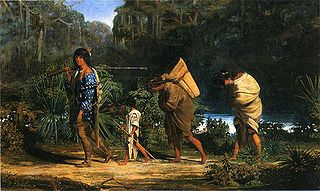 W
WThe Choctaw are a Native American people originally occupying what is now the Southeastern United States. Their Choctaw language belongs to the Muskogean language family group. In the present day, they are organized as the federally recognized Choctaw Nation, but also smaller bands located in Mississippi, Alabama and Louisiana.
 W
WJoseph Louis Cook, or Akiatonharónkwen (Mohawk), was an Iroquois leader and commissioned officer in the Continental Army during the American Revolution. Born to an African father and an Abenaki mother in what is now Schuylerville, New York, he and his mother were taken captive in a French-Mohawk raid and taken to Kahnawake, a Mohawk village south of Montreal. They were adopted by a Mohawk family. His mother soon died and he served Catholic missionaries, learning French. He became an influential leader among the Mohawk and distinguished himself as a warrior for their allies the French during the French and Indian War.
 W
WJohn Abeel III, known as Gaiänt'wakê or Kaiiontwa'kon in the Seneca language and thus generally known as Cornplanter, was a Dutch-Seneca war chief and diplomat of the Wolf clan. As a chief warrior, Cornplanter fought in the French and Indian War and the American Revolutionary War. In both wars, the Seneca and three other Iroquois nations were allied with the British. After the war Cornplanter led negotiations with the United States and was a signatory of the Treaty of Fort Stanwix (1784). He helped gain Iroquois neutrality during the Northwest Indian War.
 W
WCornstalk was a prominent leader of the Shawnee nation just prior to the American Revolutionary War (1775-1783). His name, Hokoleskwa, translates loosely into "stalk of corn" in English, and is spelled Colesqua in some accounts. He was also known as Keigh-tugh-qua and Wynepuechsika.
 W
WGuyasuta was an important leader of the Seneca people in the second half of the eighteenth century, playing a central role in the diplomacy and warfare of that era. At young age, he and his family migrated along the Allegheny River and finally settled in Logstown, a Seneca village in Pennsylvania. The paternal half of his ancestry were decorated warriors.
 W
WHandsome Lake was a Seneca religious leader of the Iroquois people. He was a half-brother to Cornplanter, a Seneca war chief.
 W
WDavid Hill (Karonghyontye), was a Mohawk chief during the American Revolution. As a prominent war chief he is often titled "Captain" David Hill.
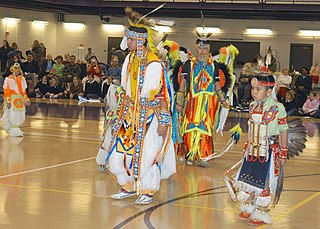 W
WThe Ho-Chunk, also known as Hoocągra or Winnebago, are a Siouan-speaking Native American people whose historic territory includes parts of Wisconsin, Minnesota, Iowa, and Illinois. Today, Ho-Chunk people are enrolled in two federally recognized tribes, the Ho-Chunk Nation of Wisconsin and the Winnebago Tribe of Nebraska.
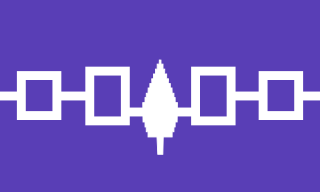 W
WThe Iroquois or Haudenosaunee are a historical indigenous confederacy in northeast North America. They were known during the colonial years to the French as the Iroquois League, later as the Iroquois Confederacy and to the English as the Five Nations, comprising the Mohawk, Onondaga, Oneida, Cayuga, and Seneca. After 1722, they accepted the Tuscarora people from the southeast into their confederacy, as they were also Iroquoian-speaking, consequently became known as the Six Nations.
 W
WThe Lenape, also called the Leni Lenape, Lenni Lenape and Delaware people, are an indigenous people of the Northeastern Woodlands, who live in the United States and Canada. Their historical territory included present-day New Jersey and eastern Pennsylvania along the Delaware River watershed, New York City, western Long Island, and the Lower Hudson Valley. Today, Lenape people belong to the Delaware Nation and Delaware Tribe of Indians in Oklahoma; the Stockbridge-Munsee Community in Wisconsin; and the Munsee-Delaware Nation, Moravian of the Thames First Nation, and Delaware of Six Nations in Ontario.
 W
WLittle Turtle was a Sagamore (chief) of the Miami people, who became one of the most famous Native American military leaders. Historian Wiley Sword calls him "perhaps the most capable Indian leader then in the Northwest Territory," although he later signed several treaties ceding land, which caused him to lose his leader status during the battles which became a prelude to the War of 1812. In the 1790s, Mihšihkinaahkwa led a confederation of native warriors to several major victories against U.S. forces in the Northwest Indian Wars, sometimes called "Little Turtle's War", particularly St. Clair's defeat in 1791, wherein the confederation defeated General Arthur St. Clair, who lost 900 men in the most decisive loss by the U.S. Army against Native American forces.
 W
WThe Lumbee Tribe of North Carolina is a state-recognized tribe in North Carolina numbering approximately 55,000 enrolled members, most of them living primarily in Robeson, Hoke, Cumberland and Scotland counties. The Lumbee Tribe is the largest state tribe in North Carolina, the largest state tribe east of the Mississippi River, and the ninth largest non-federally recognized tribe in the United States. The Lumbee take their name from the Lumber River which winds through Robeson County. Pembroke, North Carolina, is the economic, cultural and political center of the tribe. The Lumbee Tribe was recognized as a Native American tribe by the United States Congress in 1956, under conditions that it agreed to at the time, which did not allow them to have benefits available to other federally recognized tribes. According to the 2000 United States Census report, 89% of the population of the town of Pembroke, North Carolina, identify as Lumbee; 40% of Robeson County's population identify as Lumbee.
 W
WMatchekewis was a tribal leader of the Ojibwe people. His people had their home in Michigan country, migrating to avoid pioneer expansion. In 1763, he took part in Pontiac's Rebellion in the capture of Fort Michilimackinac from the Kingdom of Great Britain. But in 1780 he commanded his tribes in the American Revolutionary War as an ally of Great Britain against the Kingdom of Spain. At the Battle of St. Louis, in charge of all of the native American troops, he was defeated by the Spanish gunpowder weapons. After the war, he signed the Treaty of Greenville with the young United States, ceding Bois Blanc Island in Lake Huron, in addition to all of his original lands, to the United States.
 W
WAlexander McGillivray, also known as Hoboi-Hili-Miko, was a Muscogee (Creek) leader. The son of a Muscogee mother and a Scottish father, he had skills no other Creek of his day had: he was not only literate but educated, and he knew the "white" world and merchandise trading well. These gave him prestige, especially with European-Americans, who were glad to finally find a Creek leader they could talk to and deal with. He used his role as link between the two worlds to his advantage, not always fairly, and became the richest Creek of his time.
 W
WThe Miami are a Native American nation originally speaking one of the Algonquian languages. Among the peoples known as the Great Lakes tribes, it occupied territory that is now identified as North-central Indiana, southwest Michigan, and western Ohio. By 1846, most of the Miami had been forcefully displaced to Indian Territory. The Miami Tribe of Oklahoma is the only federally recognized tribe of Miami Indians in the United States. The Miami Nation of Indiana is an unrecognized tribe.
 W
WThe Mingo people are an Iroquoian-speaking group of Native Americans made up of peoples who migrated west to the Ohio Country in the mid-18th century, primarily Seneca and Cayuga. Anglo-Americans called these migrants mingos, a corruption of mingwe, an Eastern Algonquian name for Iroquoian-language groups in general. Mingos have also been called "Ohio Iroquois" and "Ohio Seneca".
 W
WThe Mohicans are an Eastern Algonquian Native American tribe that was Algonquian-speaking. As part of the Eastern Algonquian family of tribes, they are related to the abutting Lenape, who occupied territory to the south as far as the Atlantic coast. The Mohicans occupied the upper tidal Hudson River Valley, including the confluence of the Mohawk River and into western New England centered on the upper Housatonic watershed. After 1680, due to conflicts with the Mohawk during the Beaver Wars, many were driven southeastward across the present-day Massachusetts western border and the Taconic Mountains to Berkshire County around Stockbridge, Massachusetts.
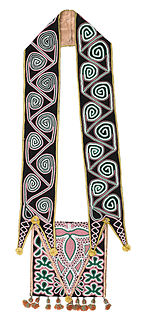 W
WThe Muscogee, also known as the Muskogee, Muscogee Creek, Creek, Mvskokvlke, or the Muscogee Creek Confederacy in the Muscogee language, are a related group of indigenous peoples of the Southeastern Woodlands. Their original homelands are in what now comprises southern Tennessee, all of Alabama, western Georgia and part of northern Florida.
 W
WNonhelema Hokolesqua Born in 1718 into the Chalakatha (Chilliothe) division of the Shawnee nation and spent her early youth in Pennsylvania. Her brother Cornstalk, and her metis mother Katee accompanied her father Okowellos to the Alabama country in 1725. Their family returned to Pennsylvania within five years. In 1734 she married her first husband, a Chalakatha chief. By 1750 Nonhelema was a Shawnee chieftess during the 18th century and the sister of Cornstalk, with whom she migrated to Ohio and founded neighboring villages.
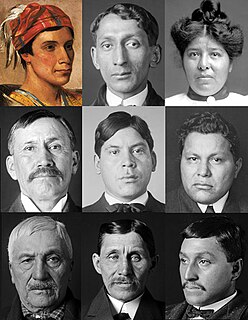 W
WThe Oneida are an American Indian tribe and First Nations band. They are one of the five founding nations of the Iroquois Confederacy in the area of upstate New York, particularly near the Great Lakes.
 W
WThe Onondaga people are one of the original five constituent nations of the Iroquois (Haudenosaunee) Confederacy in northeast North America. Their traditional homeland is in and around present-day Onondaga County, New York, south of Lake Ontario. They are known as Gana’dagwëni:io’geh to the other Iroquois tribes. Being centrally located, they are considered the "Keepers of the Fire" in the figurative longhouse that shelters the Five Nations. The Cayuga and Seneca have territory to their west and the Oneida and Mohawk to their east. For this reason, the League of the Iroquois historically met at the Iroquois government's capital at Onondaga, as the traditional chiefs do today.
 W
WPacanne was a leading Miami chief during the late 18th and early 19th centuries. Son of The Turtle (Aquenackqua), he was the brother of Tacumwah, who was the mother of Chief Jean Baptiste Richardville. Their family owned and controlled the Long Portage, an 8-mile strip of land between the Maumee and Wabash Rivers used by traders travelling between Canada and Louisiana. As such, they were one of the most influential families of Kekionga.
 W
WPatriots were those colonists of the Thirteen Colonies who rejected British rule during the American Revolution and declared the United States of America as an independent nation in July 1776. Their decision was based on the political philosophy of republicanism as expressed by spokesmen such as Thomas Jefferson, John Adams, and Thomas Paine. They were opposed by the Loyalists who supported continued British rule.
 W
WCaptain Pipe (Lenape), called Konieschquanoheel and also known as Hopocan, was an 18th-century chief of the Algonquian-speaking Lenape (Delaware) and a member of the Wolf Clan. He succeeded his maternal uncle Custaloga as chief by 1773.
 W
WRed Jacket was a Seneca orator and chief of the Wolf clan, based in Western New York. On behalf of his nation, he negotiated with the new United States after the American Revolutionary War, when the Seneca as British allies were forced to cede much land following the defeat of the British; he signed the Treaty of Canandaigua (1794). He helped secure some Seneca territory in New York state, although most of his people had migrated to Canada for resettlement after the Paris Treaty.
 W
WThe Sac or Sauk are a group of Native Americans of the Eastern Woodlands culture group, who lived primarily in the region of what is now Green Bay, Wisconsin, when first encountered by the French in 1667. Their autonym is oθaakiiwaki, and their exonym is Ozaagii(-wag) in Ojibwe. The latter name was transliterated into French and English by colonists of those cultures. Today they have three federally recognized tribes, together with the Meskwaki (Fox), located in Iowa, Oklahoma and Kansas.
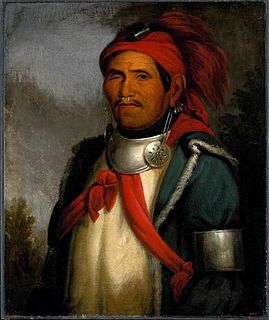 W
WThe Shawnee are an Algonquian-speaking ethnic group indigenous to North America. In colonial times they were a semi-migratory Native American nation, primarily inhabiting areas of the Ohio Valley, extending from what became Ohio and Kentucky eastward to West Virginia, Virginia, Pennsylvania, and Western Maryland; south to Alabama and South Carolina; and westward to Indiana, and Illinois.
 W
WThe Stockbridge Militia was a Native American military unit from Stockbridge, Massachusetts which served in the Continental Army during the American Revolutionary War. This Massachusetts militia unit was composed mostly of Mahican, Wappinger, and Munsee from the Stockbridge area. While most northeastern tribes, such as Joseph Brant's Mohawks, aligned themselves with the British, the Stockbridge tribes cast their lot with the colonies. Led by Jehoiaikim Mtohksin and Abraham Nimham, they were the first Native American soldiers to fight against the British, during the American Revolutionary War.
 W
WThe Tuscarora are a Native American tribe and First Nations band government of the Iroquoian-language family, with members today in, New York, and Ontario. They coalesced as a people around the Great Lakes, likely about the same time as the rise of the Five Nations of the historic Iroquois Confederacy, also Iroquoian-speaking and based then in present-day New York.
 W
WNanyehi, known in English as Nancy Ward, was a Beloved Woman and political leader of the Cherokee. She advocated for peaceful coexistence with European Americans and, late in life, spoke out for Cherokee retention of tribal lands. She is credited with the introduction of dairy products to the Cherokee economy.
 W
WThe Wyandot people or Wendat, also called the Huron Nation and Huron people, are Iroquoian-speaking peoples of North America who emerged as a tribe around the north shore of Lake Ontario.